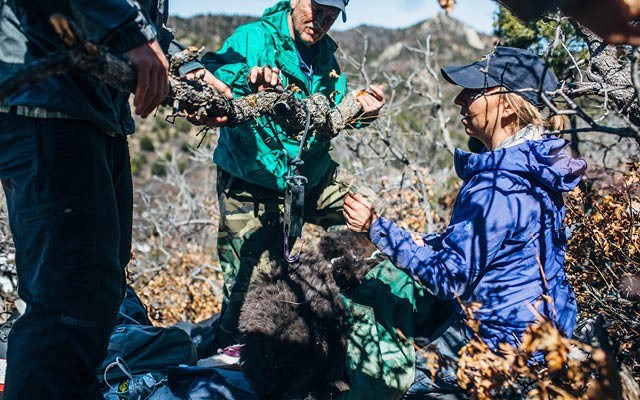An extensive study out of Colorado is upending common assumptions of black bear behaviour that could have implications for the future management of the species.
For the past six years, a team of Colorado Parks and Wildlife researchers has been closely monitoring black bears in the state, tracking them into dens and analyzing fur samples through a landmark study that has shed new light on the animals' behaviour.
And while the majority of insights gleaned largely confirm what scientists have suspected for some time, some fly in the face of longstanding mainstream beliefs.
Perhaps the most significant conclusion was that black bears rarely become "addicted" to garbage, but rather rely on human food to supplement their diet only when necessary during poor food years.
"We've been hearing those saying a fed bear is a dead bear, a garbage bear, all of that stuff, but the fact is that bears don't want to eat trash," said Sylvia Dolson of the Whistler Get Bear Smart Society.
"They will always revert to natural food so long as natural food is available."
While this contends with Colorado's "two-strike" policy of euthanizing so-called food-conditioned bears, in British Columbia, the Conservation Officer Service bases their response to problem bears on the potential risk to human safety.
"So if these bears are continuing to access food sources and they're beginning to exhibit some risky behaviour that we think is going to be a threat to public safety, that's when those bears get removed," explained Mike Badry, wildlife conflict manager with the Ministry of Environment.
In a state that saw more than 1,200 human-bear conflicts in 2015, one prevailing theory was that the rise in numbers must have been due to Colorado's growing bear population. This, too, turned out to be little more than speculation. In fact, what researchers found was that bears were simply adapting to an expanding urban landscape, which in turn led to more conflict.
"Even if the population of bears isn't changing, you may see changes in the number of incidents," noted Chuck Anderson, mammal research leader with Colorado Parks and Wildlife. "Obviously, it has to do with the forage availability of human food sources."
Adding to the issue is the direct effect warming temperatures are having on bears' hibernation patterns, something researchers knew little about until recently.
"The duration of hibernation will decrease as those temperatures increase," Anderson said. "What that basically says is bears are going to be out for a longer period of time, and if we don't address those food rewards associated with municipalities and bear habitat, that's just more opportunity for bears to interact with people and have problems."
Using climate projections, the research team estimated that bears' average hibernation period in southwestern Colorado could decline to somewhere between 15 and 40 days a year by 2050.
Anderson explained that, in recent years, bears in warmer southern states have actually stopped hibernating completely, instead enduring only brief inactive periods throughout the winter. While we know this increases the potential for conflict, what scientists don't yet understand is what the long-term biological impacts could be.
For Anderson, the study's results all point to the importance of managing attractants appropriately.
"As managers, we don't have any control over food storage," he said.
"Municipalities have to be involved in that and they've got to do two things: Be open to providing bear-proof containers in the cities where we've got issues with bears accessing garbage, and also, there has to be some level of enforcement."
Anderson highlighted the City of Durango, where researchers noted a 50-per-cent drop in conflicts once bear-proof containers were installed.




